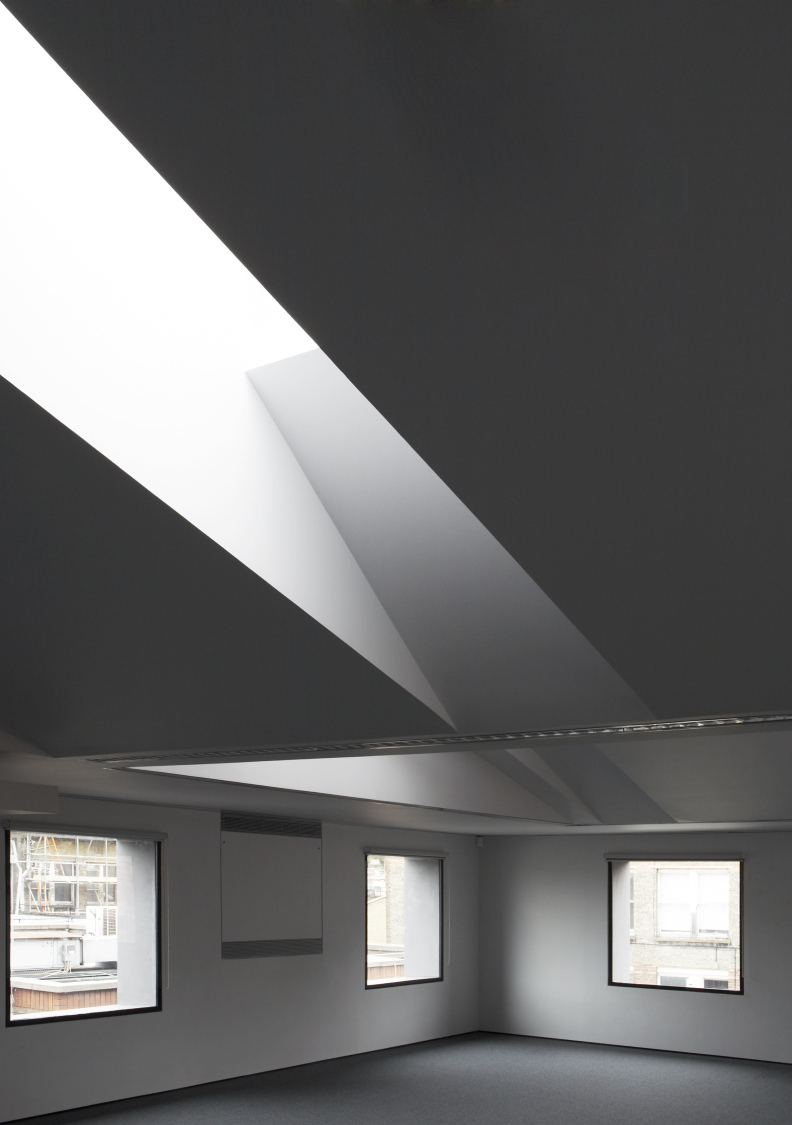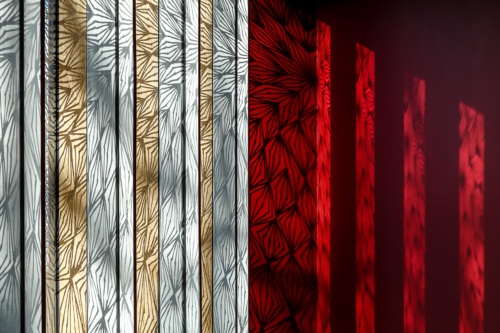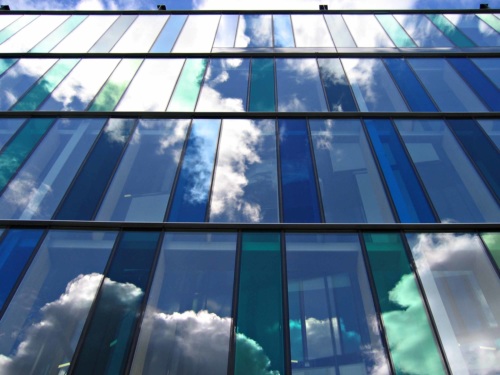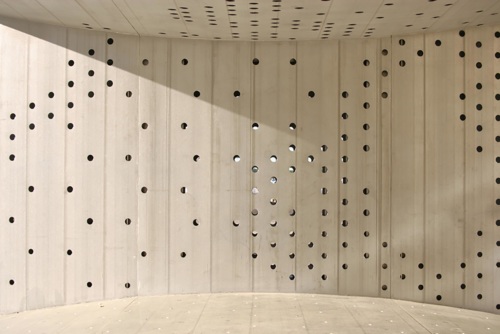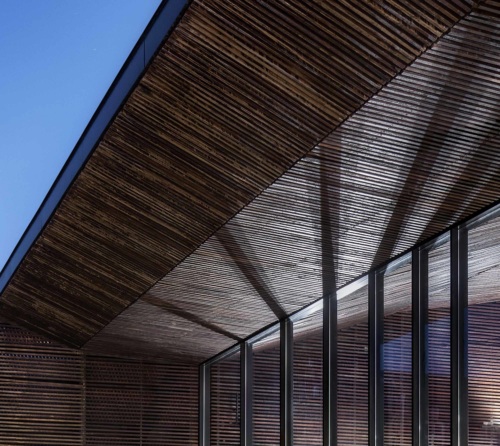
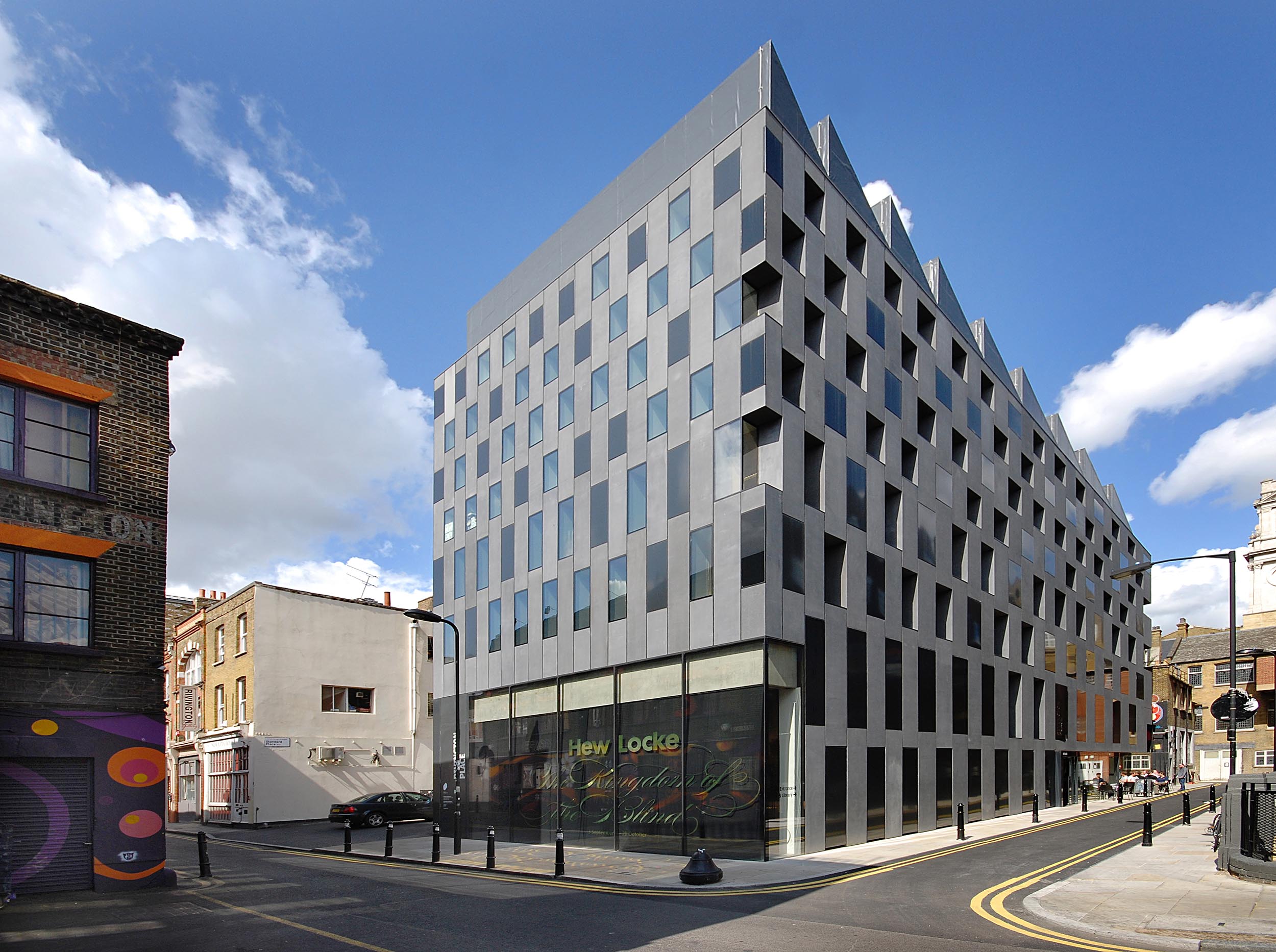
Rivington Place
London, UK
- Status
2007 - Area
1,445 m² / 15,554 ft² - Category
Civic, Culture, Commercial - Design Architect
Adjaye Associates - Client
Sense of Place / Iniva and Autograph ABP - Project Manager
Bucknall Austin - Quantity Surveyor
Bucknall Austin - Mechanical/Plumbing Engineer
Michael Popper - Structural Engineer
Techniker - Awards
RIBA Arts & Culture Award, Royal Institute of British Architects, 2008
Technical Info +
The effect of the façade system on the internal spaces varies in different parts of the building. It is not unusual for spaces to have windows at two different levels, the lower ones giving views into the street and the upper ones giving views of the sky.
At the time of its launch, Rivington Place was the first new arts building in London to be backed with public funding since the Hayward Gallery, forty years earlier. Rivington Place is the permanent home for two arts organisations, Iniva (Institute of International Visual Art) and Autograph ABP. Not only a key addition to the London art scene, it provides a new and innovative visual arts space dedicated to work by practitioners from culturally diverse backgrounds. It serves as a centre of excellence for the presentation and dissemination of those ideas and practices in the contemporary visual arts, which have been marginalised by mainstream cultural institutions.
Located in a narrow street in Shoreditch, the historic fabric includes a number of warehouses that have been re-colonised by cultural organisations and small businesses. The building is on a tight corner site and surrounded by other buildings. Entry is via a three-storey high atrium which is positioned half way down its long side. The public spaces are accessed from the atrium, with offices on the floors above. The external façade is punctuated by rectangular openings positioned within an expanding grid. The openings on the front elevation are the same width, but a different height, at each level. On the side elevation, both dimensions are changeable.
The effect of the façade system on the internal spaces varies in different parts of the building. It is not unusual for spaces to have windows at two different levels, the lower ones giving views into the street and the upper ones giving views of the sky. In the larger spaces, the windows produce an ambiguous sense of scale as their position and size contradict the effects of perspective. On the short façade, the pattern of the openings exaggerates the vertical perspective, making the building seem higher. On the long facade, the pattern of the openings contradicts the horizontal perspective, making the building appear shorter than it is.
